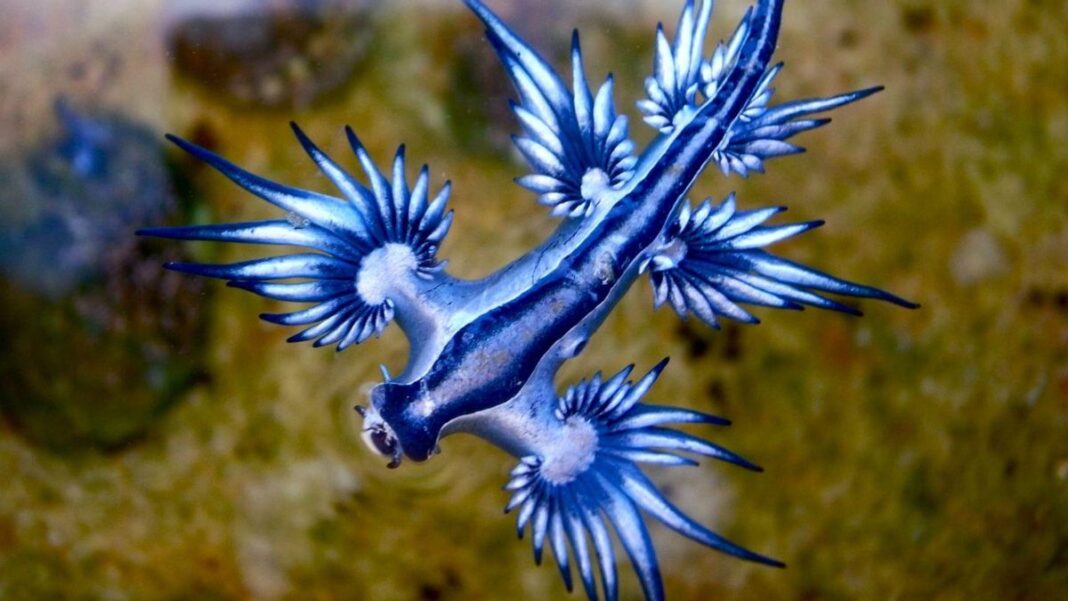Some beaches along the Spanish coast have experienced, in the last few weeks, the presence of some specimens of blue dragons a pelagic sea slug of exotic appearance and metallic blue color known as Glaucus atlanticus that float upside down and measure between 3 and 4 centimeters.
Why have alarms been raised? On Canary beaches, for example, red flags have been raised to prohibit bathing due to the presence of several specimens. And it is that the blue dragons can cause painful and toxic stings. This is because it feeds on venomous jellyfish such as Portuguese dogfish and stores the stinging cells (nematocysts) of these prey in its body. It then reuses them as a defense, concentrating the venom and making it potentially more potent than that of the animals it feeds on.
Contact with a blue dragon can cause very painful stings, accompanied by swelling, blisters, nausea or, in severe cases, severe allergic reactions. Therefore, even if it is neither aggressive nor lethal, represents a real risk if handled without precaution, even when dead or stranded on the beach. When stung, it is recommended to wash the area with salt water, do not rub, and go to a medical center if symptoms worsen.
are there any specimens of these slugs in Ibiza? The first documented sighting on the Balearic island dates back to 1705, according to botanist Johann Philipp Breyne. But the curious thing is that in the Balearic Islands these animals were not seen again until last month, when a marine biologist observed a couple of specimens in Mallorca. Also in 2023 several blue dragons were seen off the coast of Alicante.
Given the sea currents and the appearance in nearby areas, it could not be ruled out that some of these sea slugs could reach Ibiza although it would be very rare.
For the full article, please visit Diario de Ibiza website here.

